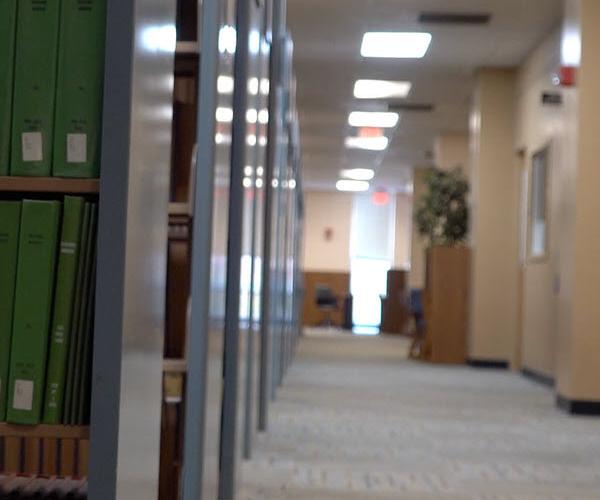
by Andy Herzog


by Andy Herzog
For many academic libraries, this semester has been a little different than most. At the University of Texas at Arlington (UTA), the university extended spring break to a second week (March 16th) and switched all classes online the following week (starting March 23rd). During the extended spring break, UTA Libraries remained open to students while adapting spaces to encourage social distancing. On March 24th, UTA Libraries shifted their services online as they closed their physical spaces to students but still provided laptops, tablets, hotspots, and webcams for checkout.
With so much change to academic life, what can our data tell us about user behavior in a COVID-19 environment? With a closed building and physical stacks, decreases are common in a number of common library data points. In light of these changes, this blog post will look at some of the data points that showed an increase. In the month after March 16th, document delivery, course reserves, technology checkouts, and chat all increased at UTA Libraries. Library staff also created new resources and services specific to COVID-19.
As classes shifted online in the middle of the semester, the use of document delivery and course reserves increased. With the physical collection no longer available, these services made content available to support the transition to online. In the month after March 16th, course reserves added 28 resources compared to 2 in 2019. These includes 19 chapters, 1 book, and 8 other e-reserves. In the same time period, document delivery transactions increased by 23.5% from 200 to 247. Scanned book chapters saw the largest increase from 6 to 13. Video reserves does not have specific dates for their data, but the number of videos made available in e-reserves more than doubled from 21 in 2018-19 to 46 in 2019-2020. These increases highlight the role UTA Libraries played helping a mid-semester transition.
When all classes moved online because of COVID-19, students checked out more computers from the library for longer periods. Before COVID-19, UTA Libraries circulated 181 laptops and tablets, and students used library desktops an average of 22,000 hours a month. To offset the loss of access and bridge the transition to online classes, both UTA Libraries and the university worked to increase the number of computers available for checkout at the library. The library pulled some computers from its physical spaces, and UTA purchased additional computers that arrived in a series of shipments that continued into May. By early May, the number of laptops and tablets increased to 483 from the initial 181. UTA Libraries switched from a 3-day checkout period for laptops and tablets to an end of semester due date to help with social distancing. From March 16th to April 16th, UTA Libraries checked out 256 tablets and laptops, 20 hotspots, and 8 webcams. If we look at the 2019 data, the checkouts are much higher at 990 but have a 3-day loan period. While not perfect, a point of comparison can be the number of potential days the technology was lent to students. 990 laptop checkouts lent for 3 days each comes to a potential 2,970 days lent to users. By comparison in 2020, the technology was lent for a potential 15,004 days. These numbers do not account for early returns either in 2019 or 2020.

Library chat interactions shot up as the university responded to COVID-19. During March 16th to April 16th, the library received 3282 questions up from 2472 during a similar period in 2019. An increase of 32.77%, or 810 questions. If we look at the data by day, Friday through Sunday saw the biggest increases (56.86%). Surprisingly, Thursday actually saw a small drop, but Monday through Wednesday averaged a 30.86% increase.
When looking at the change in time of day, midnight to 2:00am saw the biggest increase with an average of 546.46%. Almost all times of day saw an increase in chat questions, but the peak times were pushed back to the afternoon and early evening.

It represents a potential shift in the study schedule of UTA students. For example, one student I spoke to had increased family responsibilities at home, leading her to study later (until 2:00am) than before. If total interaction data (telephone, email, in-person) is added to chat interactions for the same time periods, there is still a 12.84% overall increase in number of transactions compared to 2019.
Besides these common data points, library staff created new services and resources to respond directly to COVID-19. A number of LibGuides were created to share information and visualizations about COVID-19 including UTA Emergency Resources during COVID-19, UTA Libraries Services during COVID-19, and About Novel Coronavirus (COVID-19). They were viewed 5,153 times as of May 13th. A COVID-19 archive project started in early May has gathered 42 submissions and 7 oral history participants as of May 14th. UTA Library Staff and a few non-staff volunteers have made and distributed 87 masks to UTA users as of May 11th. In addition, 204 face shields were printed and donated to local hospitals as of May 11th. All in all, these are just a few of the different data points that could be used to look at how users are interacting with UTA Libraries after changes due to COVID-19.
Add new comment